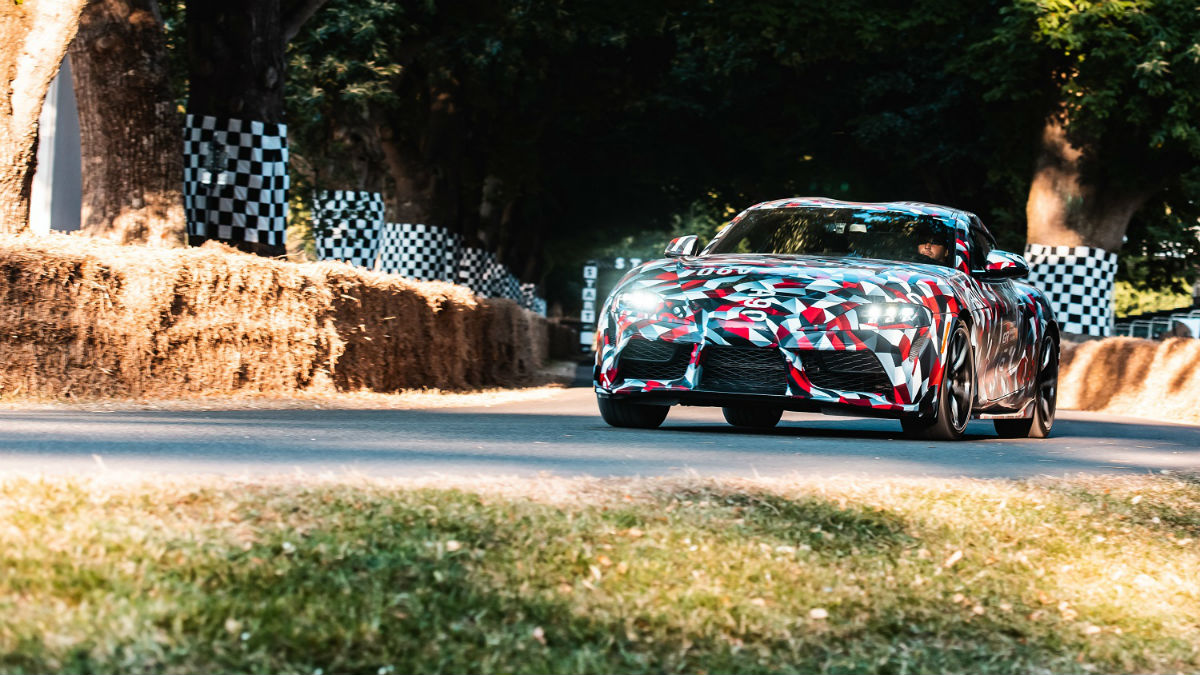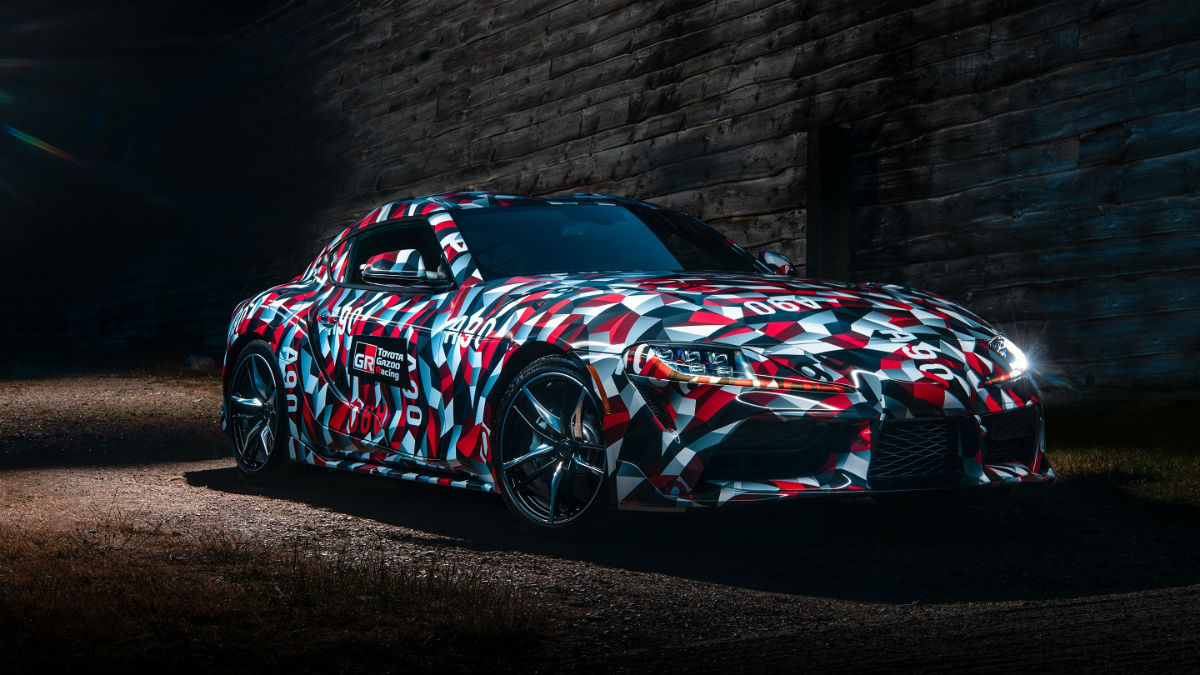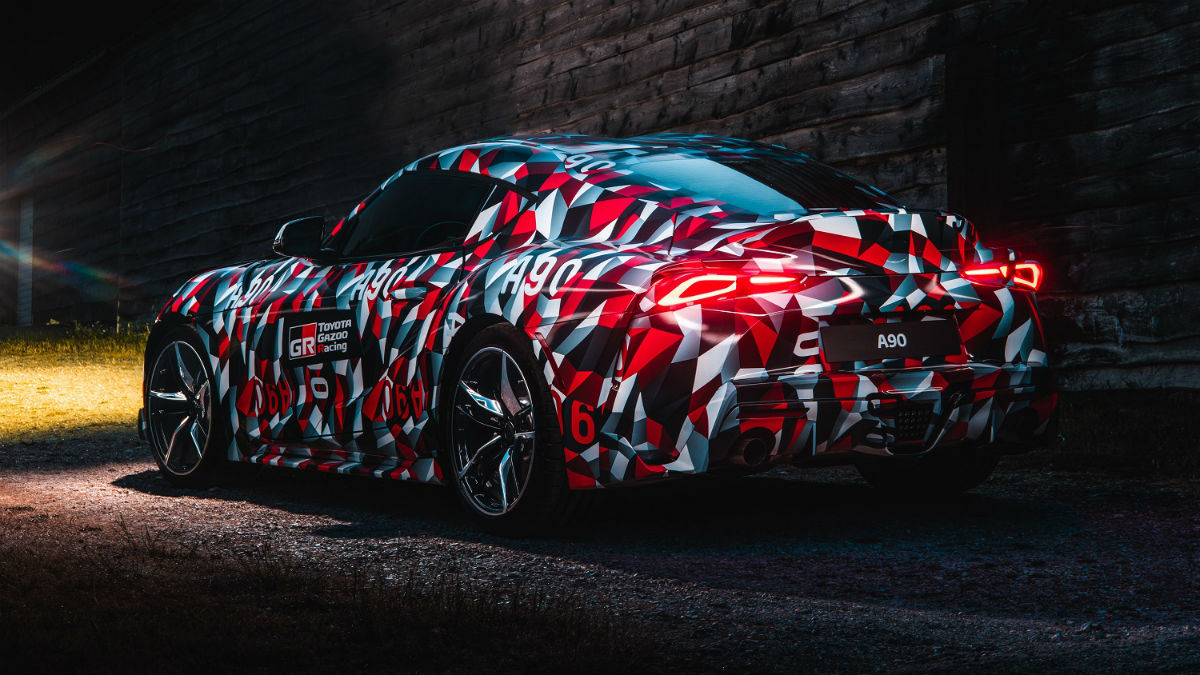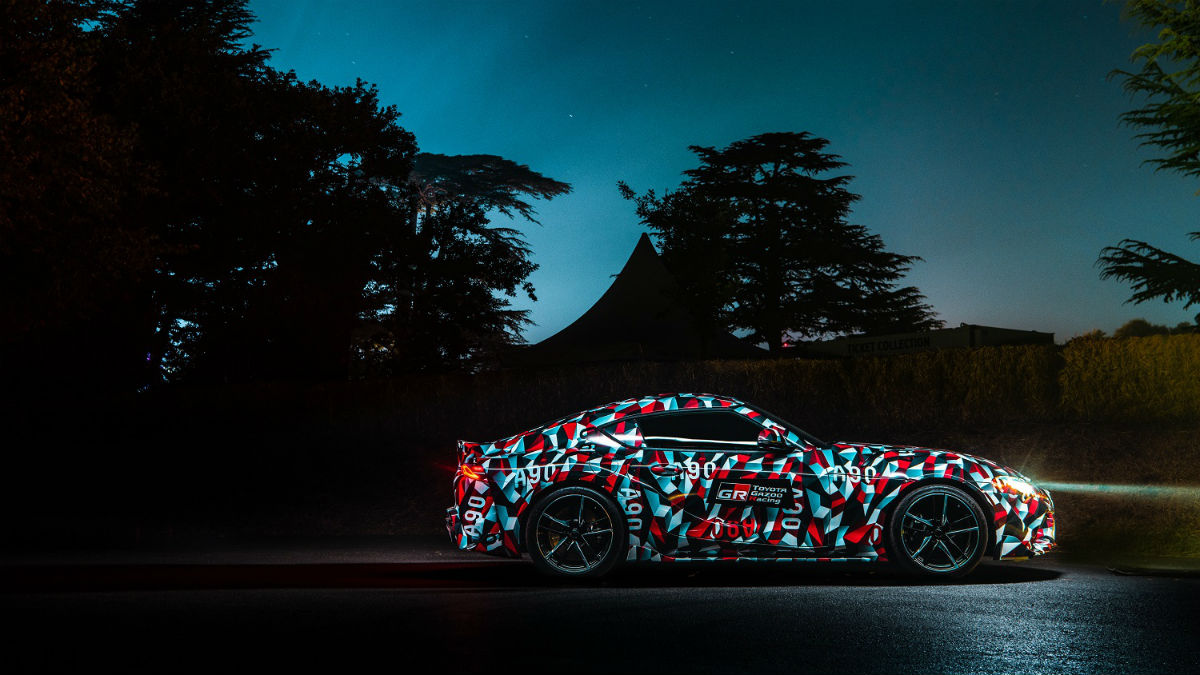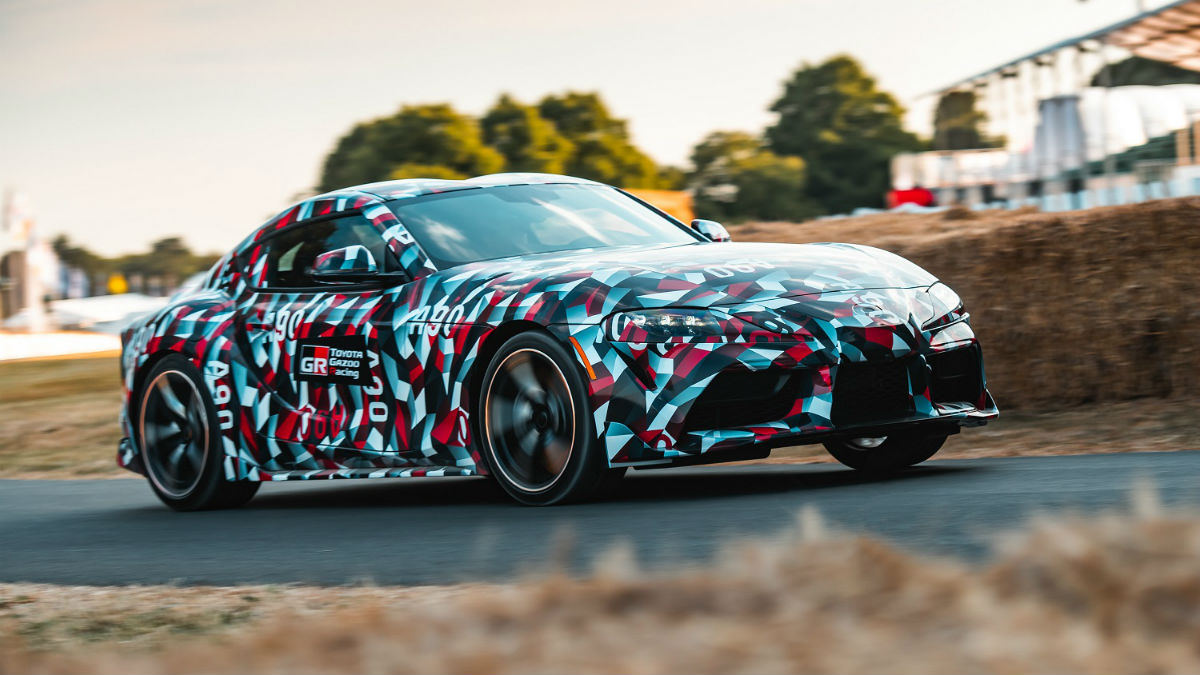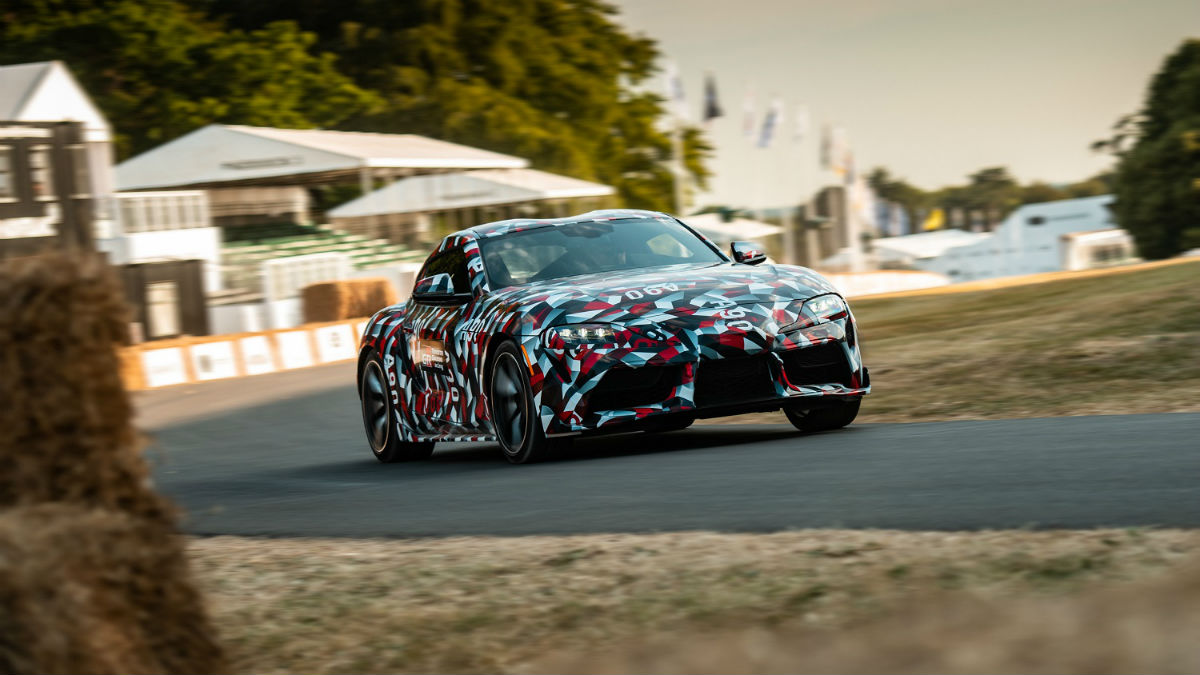Japanese sports cars are a thing of beauty. Without the Honda NSX, the Nissan Z, the Mitsubishi 3000GT, and the Toyota Supra, the automotive industry would look very different today.
These cars and their various innovations pushed contemporary sports
Now it’s the Toyota Supra to enter a new generation. After 16 years of waiting, enthusiasts are understandably antsy. Due later this year, the 2019 Toyota Supra is finally taking shape through rumors, leaks, motorsports variants, and camouflaged reveals. So, without further ado, here’s everything we know about the new Supra.
Styling
Our best look at the 2019 Supra came recently during the vehicle’s debut at the 2018 Goodwood Festival of Speed. A camouflaged production version showed the vehicle’s size, lines, and wheelbase – but not much else. From what we can piece together, the Supra will borrow design cues from the FT-1 Concept that debuted at the 2014 Detroit Auto Show and the Gazoo Racing Concept that rolled into last year’s Geneva Motor Show.

The front end features a long hood, pointed snout, segmented headlights, and large air intakes. In profile, the car has a tapering roofline just past the A-pillar, with a hard notch at the C-pillar. A pinch roof-end flows into a ducktail spoiler to make the rear haunches appear wider. We also know the new Supra will get a hatchback rear end for improved practicality.
Shared Platform
Unlike the original Supra models, the new version is a co-developed project that will yield a sports car for Toyota and another BMW (the new Z4). The two sports cars will share a single platform with carbon fiber construction, but while BMW’s Z4 will feature a convertible lid, the Supra will be coupe-only. Which automaker is in charge of what development pieces is a bit unclear, but we expect both brands to make bespoke changes to look and feel in-line with current offerings.
Powertrain
One thing is certain: The new Supra will use a BMW-developed, straight six-cylinder engine with a single turbocharger. Output is expected to fall around 335 horsepower and 332 pound-feet of torque for the standard car, according to Autoblog. A six-cylinder engine has been found in the Supra since its inception, but the new model will introduce two more powertrain variants. Road & Track reports a turbocharged four-cylinder will be available with 262hp or, when paired with an electric motor, more horses than the straight-six. It’s unclear which transmission(s) will be paired with these engines, but we’ve heard rumors of automatic-only options. That would be a bummer if you ask us.

Competition
The sports car market has changed dramatically since the Toyota Supra took its long nap. While the Nissan Z (now called the 370Z) is still around, the current model is in desperate need of a refresh and isn’t a real threat to the new Supra. Instead, buyers will be cross-shopping models like the Chevrolet Camaro, Ford Mustang, BMW 4 Series, Mercedes-Benz C-Class, and Audi A5.
Production Details
With any luck, Toyota will show off an undisguised version of its new Supra at this year’s LA Auto Show (in November), with sales beginning early-mid 2019. Magna Steyr will build both the Z4 and the Supra in its Graz, Austria, facility, alongside the Mercedes-Benz G-Class. Combined production will be limited to approximately 60,000 units annually.
